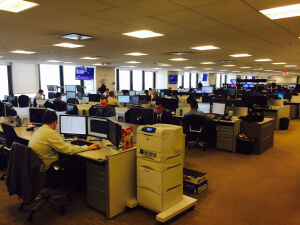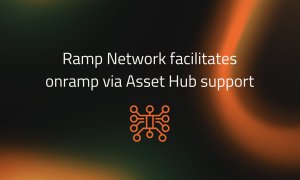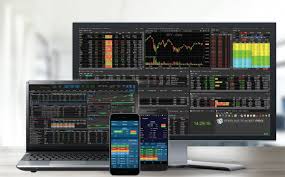Exclusive one to one in New York with FXCM CEO Drew Niv on HFT and the company’s launch of revolutionary global Enhanced Index CFD products
FXCM Inc (NYSE:FXCM) has not only joined the plethora of companies wishing to take the traditionally British CFD trading to an international audience, but has created its own revolutionary system which aims to create a switch between FX and CFDs to those in markets which are less CFD focused, and take it to the mainstream. […]

FXCM Inc (NYSE:FXCM) has not only joined the plethora of companies wishing to take the traditionally British CFD trading to an international audience, but has created its own revolutionary system which aims to create a switch between FX and CFDs to those in markets which are less CFD focused, and take it to the mainstream.
In Drew Niv’s office in New York today, FinanceFeeds gained a full perspective on the reason why such a market-changing product was developed.
How it works
Mr. Niv explained that the proprietary system on which the CFD trading environment is built on uses a different back end to that of the spot FX platform, but the front end is the same account, uses the same APIs to connect to liquidity that were launched in 2010.
The company began buying HFT (high frequency traders) market making technology around one year ago, which would enable FXCM to essentially make markets differently in CFDs.
“Market Making is an often misapplied term” explained Mr. Niv.
“When people refer to market making in retail brokerages, what they refer to is relating to the broker’s time when he looks at a trade. He looks at it through the lifetime of a trade, which is from entry to exit of the trade. This should be a loss on balance.”

“Most dealers likely take into account that between 50% or 70% should be calculated as a loss. A lot of brokerages hedge because they have capital restrictions so they will hedge after half an hour” he said.
“In terms of execution, we all look closely at ensuring that we offer better margins and liquidity. At top of book you can put a better trade on. The problem is that you cannot win in the first ten minutes” said Mr. Niv.
“It’s ok if you put a trade on, and you say this guy puts a trade on, and then the brokerage does not want to take that particular trade. What we did was take the trader who makes money in four seconds as an example. You cannot do this unless you think like a HFT” he said.
“Usually, the broker wants the trade to go against the customer for just one second. Because the speed variation allows the super aggressive retail scalper that every one hates is never profitable in the first few milliseconds. We don’t hate these types of traders and with our new technology on enhanced CFD indices we encourage them to trade with FXCM””
“As an agency we have to be financially principled, because we have to finance the whole thing because HFTs cannot. This allows us to hedge in futures if we need to. It can also very easily place a trade, and before they even confirm it, we hedged it” said Mr. Niv.
Mr. Niv then explained the reason why this model is critical. “My belief is that when 10,000 people get access to this data, 99% of the data will be useless but there will be 300 more numbers which will move the market. How can a market maker cope? He can’t. He knows how to make markets based on familiar parameters such as national GDPs, and the US Non Farm Payroll, but if there are 300 unscheduled events, then it will become absolutely impossible. You’ll get run over for months until you figure out what it is that is running you over.”
“You have to have the entire brokerage system set up so that you can be an agent at any time, and you have to play the speed game.”
“We could not handle a HFT as a client, because he is faster than us or as fast as us but we can handle everyone else which is 99.99%. In CFDs that revolution is going to happen much faster than in FX because there will be a choice.”
Mr. Niv reiterated the need to keep pace with technological change “Fintech is now huge in all English speaking countries” he said.
FXCM brings data transparency to FX
“We believe that we need to bring the data transparency into FX. In other asset classes this is normal, and there is real market depth, and a volume indicator displayed on the platform. Even in short term equities, nobody would trade without a volume indicator but in FX they do trade without it. HFT traders do have the means of looking at volume and market depth, but they pay a fortune to get it.”
“Many of our customers have NinjaTrader or EFutures, and then they buy the futures feeds for the platform. We want to bring a lot of data to the FX market for free because we feel there is a real need for it.”
Mr. Niv concurs that “So many retail clients are getting more sophisticated, and are selling data, and making their own algos, and companies there are going into fintech. Two years from now, the amount of tools in the hands of people will be completely insane!” exclaimed Mr. Niv.
“Retail traders could have everything that HFTs have; the same analytics and the same tools. The only thing that will remain unchanged is the latency aspect because this is a telecommunications issue and is unrelated to the tools, and it would be prohibitively expensive for a retail trader to try to use institutional bandwidth or have a dedicated connection.”
There are companies such as Quadrant.io which are very clever. This hooks up 1 API and it searches 400,000 indicators which are things like statistics bureaus or the UN.
Using analytics like that, traders could take that information and if for example they found that Khazakstan’s economic report has a brearing on oil price, they could do that research. CNN probably spent millions to put that together, whereas some guy today put that up for a million.”
“Systems like this only charge a few dollars a month, and anyone can do this now because it is so cheap and accessible. I believe the one bottleneck is to monitize that innovation. If you’ve got millions you can go and get your own HFT. It’s the financial access that costs a lot.”
“the CFD sector, the data revolution is already here, so we can seamlessly join it without having to put much resources into it. There is more fintech stuff to come but this would be just the final step because the data is already here within CFDs, whereas in FX the industry is behind the ball.”
“I still believe in FX” – Drew Niv
Mr. Niv firmly believes that FX has a fantastic future and that it will not be forced onto exchanges by the authorities. “Transparency will be mandatory, however it won’t go on exchange in America. Regulators will say that if you publish the ticker, as per Dodd-Frank requirements and according to mandatory clearing and swap reporting specifications then that will be sufficient.”

“You can’t download all the information on other asset classes. Banks will agree to forestalling this to avoid them having to adhere to a Dodd-Frank institutional style reporting requirement” said Mr. Niv.
“We put our data out on FastMatch publicly. Integral are starting to do it, some others will start to do it voluntarily as a competitive advantage. As companies in this industry operate more in that way, this matter becomes more important and more transparent. We are trying to make sure that if you come from that space, we have the right product, and the best API.”
As far as risk management is concerned, and how this can be viewed by ever-cautious regulators, Mr. Niv is sure that this is absolutely covered. “We do B book some clients, so that if any volatility like SNB happens again we can hedge off that” he said.
“All of our main business is very liquid. We don’t do alot of illiquid stuff because it is toxic and can cause problems, especially if high volatility suddenly occurs. There is, for example, a high likelihood of such risk with classes such as raw commodities. How often do commodities go limit up or limit down a year? Maybe once or twice which is too much of a risk so we stay away” he concluded.
To read the official FXCM press release on enhanced index CFDs click here
Photography conducted at FXCM’s New York Headquarters, copyright Andrew Saks-McLeod









